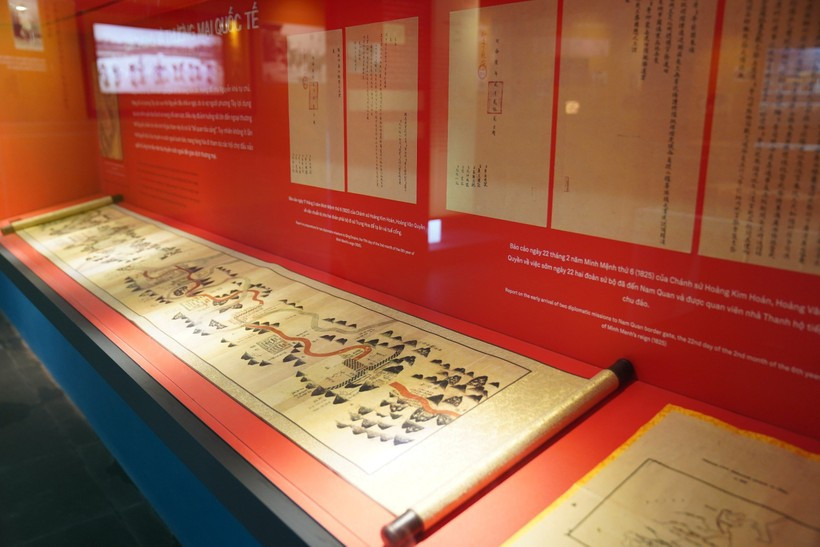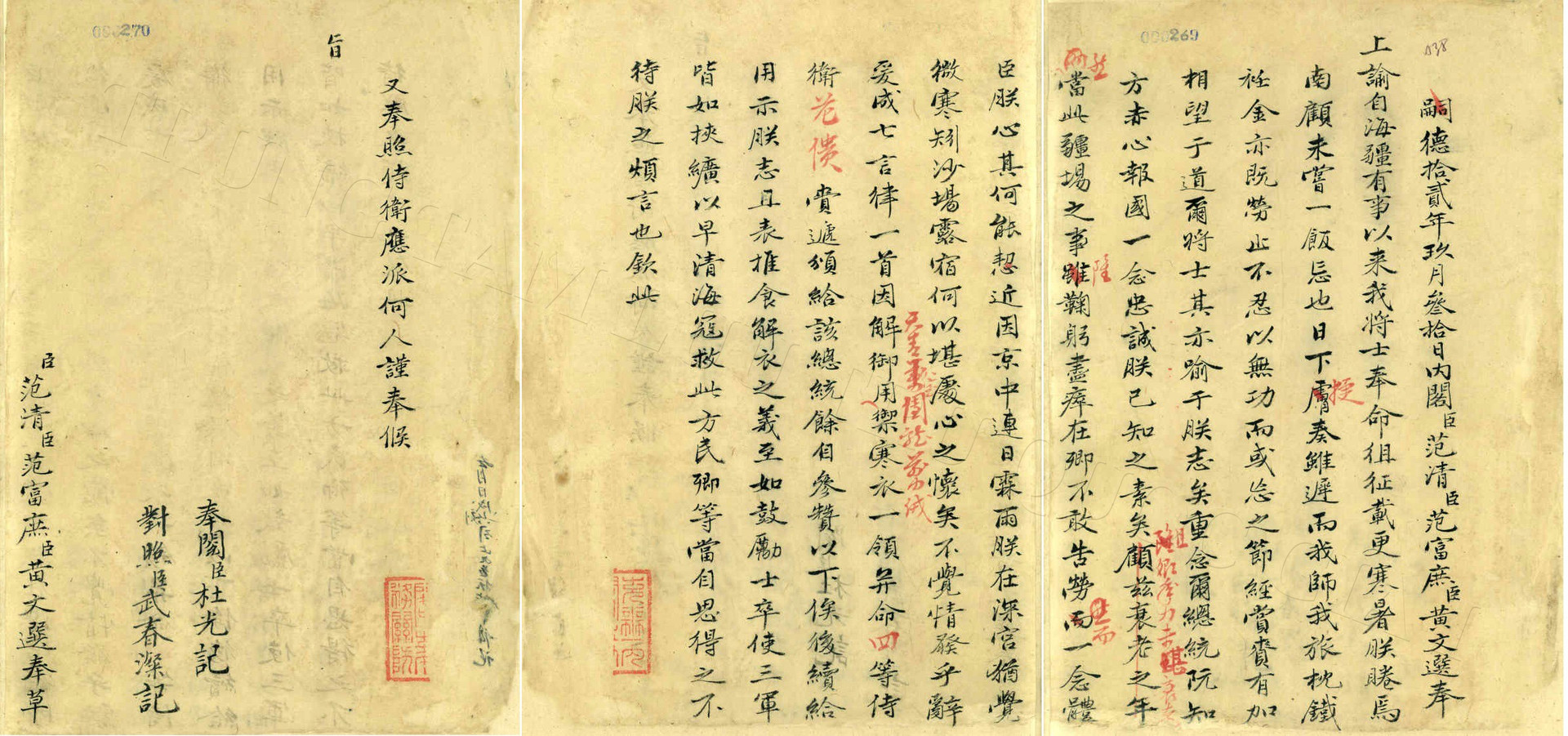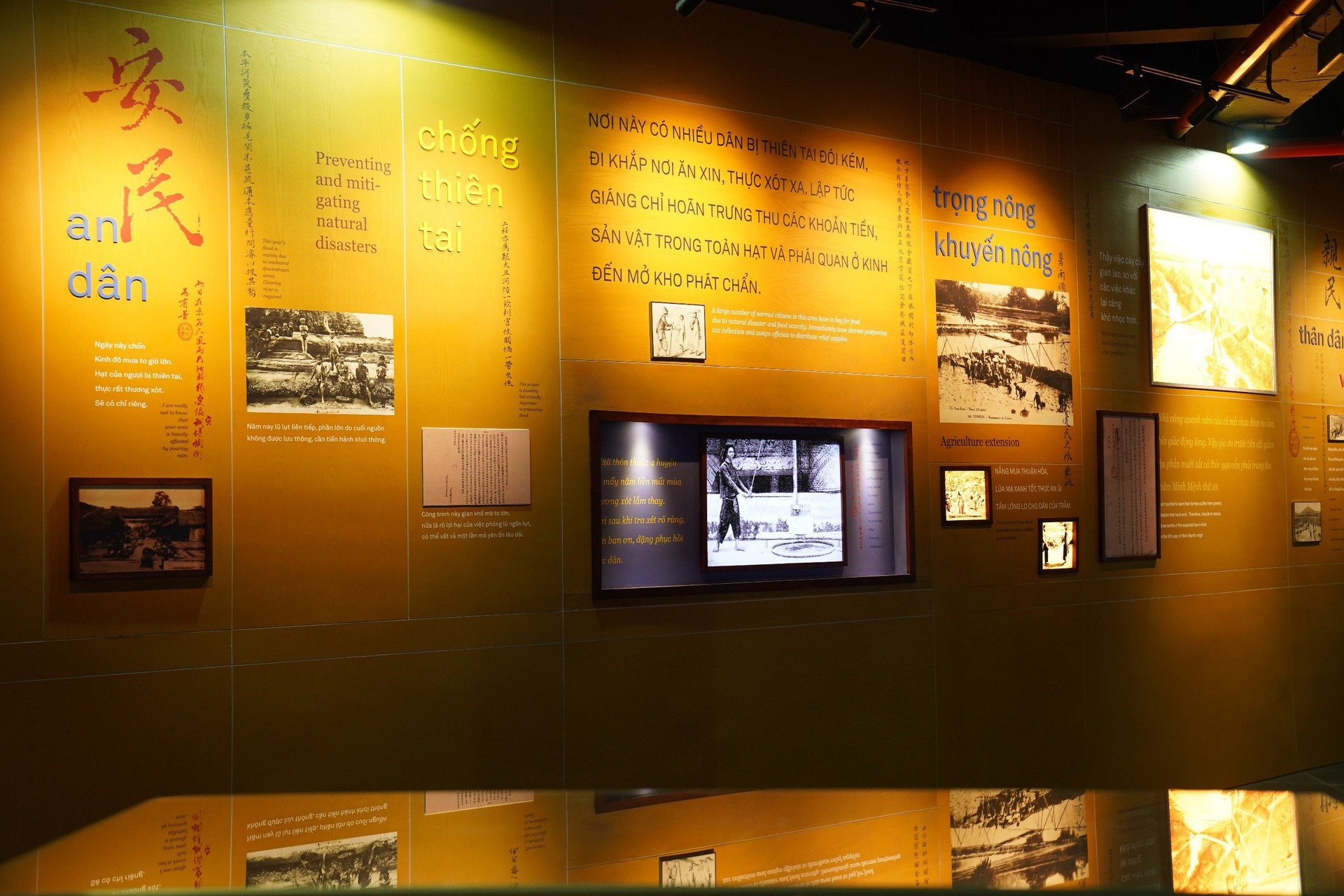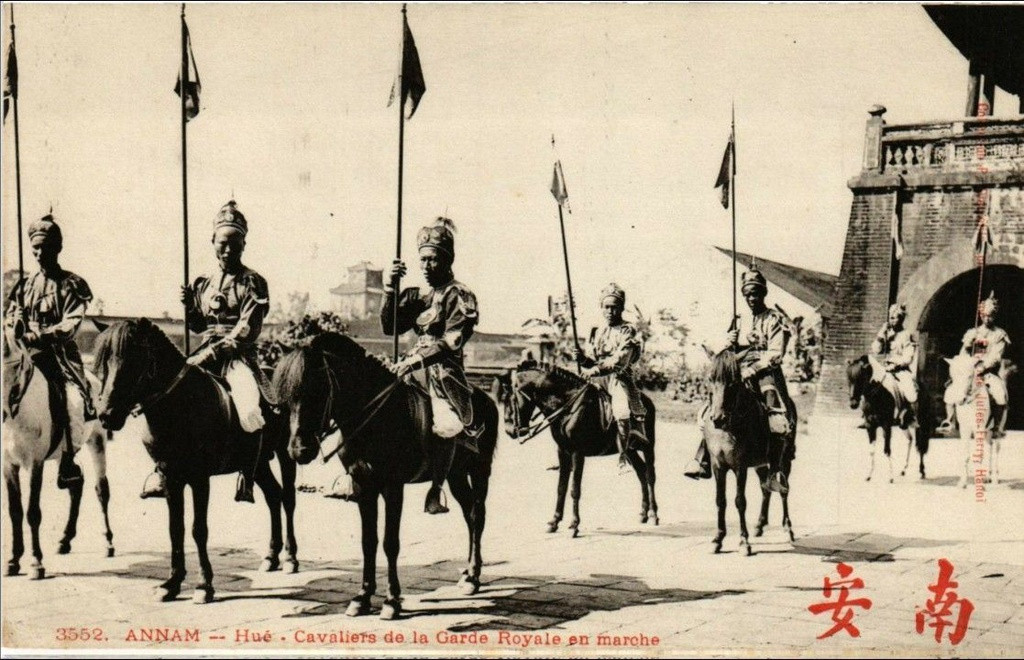The exhibition introduces a part of valuable original documents with highly reliable information, the content reflects almost every aspect of Vietnamese society under the Nguyen Dynasty.

“Since the war in the coastal area, the generals and soldiers have been ordered to go to the battlefield, enduring the cold and heat all year round. I have never forgotten to look to the South. I think a lot about you, Governor Nguyen Tri Phuong, who is loyal to his country and steadfast in his loyalty. Recently, it has been raining and windy in the capital for several days. I am still cold in the palace, let alone the wind and frost on the battlefield. How can I bear it? My heart longs for you.”
That was the royal writing of King Tu Duc in the royal decree of the 12th year of Tu Duc (1859), showing the king's concern for the generals and soldiers on the battlefield.
The king also composed a seven-word poem expressing his feelings and presented a warm coat to the mandarin Nguyen Tri Phuong (1800-1873), Commander-in-Chief of the Nguyen army against the invading French army since 1858.

Such Chinese and Nom documents have been "declassified" by the National Archives Center I and the Hue Monuments Conservation Center, translated into Vietnamese, clearly annotated with historical context, and displayed for the public.
Towards Vietnam Cultural Heritage Day (November 23), the two units coordinated to open the exhibition space "Cau Ban Trieu Nguyen - Memories of a Dynasty" at 5:00 p.m. on November 17 at National Archives Center I, No. 5 Vu Pham Ham, Yen Hoa, Cau Giay, Hanoi.
One of the notable points of this exhibition is the impressive design space combining lighting projection technology and installation art, enhancing the value of documents and artifacts, promising to bring viewers vivid experiences.
In addition, visitors can also directly interact to learn and discover more useful and interesting historical information from the records.

The Nguyen Dynasty's Imperial Records is a system of administrative documents produced during the state management activities of the Nguyen Dynasty's government apparatus, including documents issued by emperors and documents submitted by agencies in the government system to the emperor for approval in red ink. This system of documents was assigned to the Nguyen Dynasty Cabinet to collect and manage uniformly into a block of royal documents.
The remaining Nguyen Dynasty Imperial Records today include more than 86,000 original documents of 11 Nguyen Dynasty kings: Gia Long, Minh Mang, Thieu Tri, Tu Duc, Kien Phuc, Ham Nghi, Dong Khanh, Thanh Thai, Duy Tan, Khai Dinh and Bao Dai. Of these, 10 kings left their approval in vermilion ink on the documents. The two kings who did not have imperial records were Duc Duc and Hiep Hoa.
This is the only original administrative document in Vietnam and one of the few in the world that still retains the direct approval of the emperors on the document.

With special values in content and form, in 2014, the Nguyen Dynasty's Royal Records were honored by UNESCO as a documentary heritage of the Asia-Pacific region. In 2017, the Nguyen Dynasty's Royal Records were honored by UNESCO as a world documentary heritage.
Over 143 years of existence (1802-1945), the Nguyen Dynasty left its mark in history on unifying the country, establishing sovereignty, diplomatic relations, building the capital, culture and education, social life, administrative institutions, legal institutions, examinations and books..., all of which are clearly reflected in the Nguyen Dynasty's records.
The late Professor Phan Huy Le once acknowledged: "The Nguyen Dynasty's Royal Records are a cultural heritage with dual value, both tangible and intangible, priceless, not only rare but also unique and one-of-a-kind preserved to this day."
From the above contents, the exhibition introduces to the public hundreds of pages of outstanding documents selected from the Nguyen Dynasty's Royal Records - a world documentary heritage and many typical artifacts. Among them, many important documents are published for the first time.
The exhibition area is especially suitable for students, providing young people with useful history lessons from the records, thereby supplementing and enriching knowledge about history and culture in schools.
According to Vietnam+